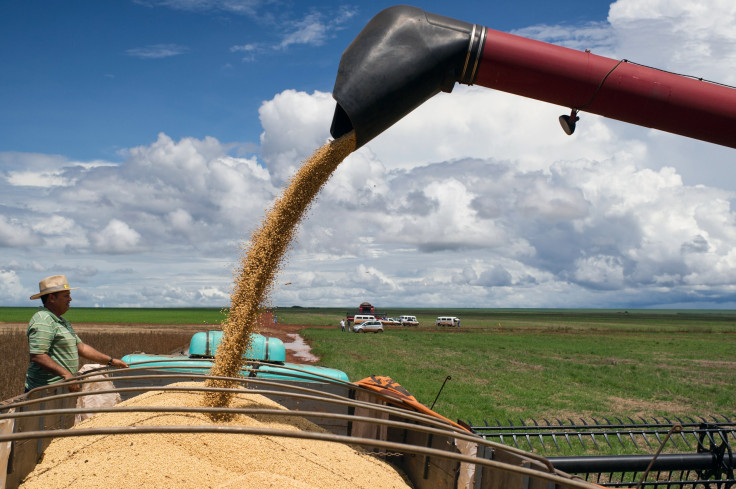China Trade: Declining Appetite For Imports Still Tugging At Exporters Like Brazil, Southeast Asia

China’s slowdown continues to dominate the global economic environment of 2016, with new data showing the country’s exports plunged the furthest in a single month since the dark days of early 2009 as imports continued to fall. The pullback has hit commodities exporters like Brazil hard and complicated growth prospects in Southeast Asian countries.
Measured in dollars, Chinese exports dropped 25.4 percent in February from a year earlier, the steepest decline since early 2009, when the worst financial crisis since the Great Depression convulsed Europe and the United States. Imports fell 13.8 percent.
David Lipton, the first deputy managing director of the International Monetary Fund, warned Tuesday global commerce in these regions will continue to suffer in the face of weak demand in countries such as China.
Trade flows “are being dragged down by weak export and import growth in large emerging markets such as China, as well as Russia and Brazil, which have been under considerable stress,” Lipton said in a speech.
The odds that the pace of China’s growth will continue to slow this year have risen amid financial market turbulence and the realization that the leadership in Beijing doesn’t have the appetite for speedy structural reform. The Chinese economy grew 6.9 percent in 2015, and Premier Li Keqiang has recommitted the country to a 6.5 percent rate over the next five years, a target the country may already be missing this year, according to some economists.
China’s appetite for commodities and other raw materials has continued to grow over the past year, despite the slowdown, but global oversupply has prevented exporters from reaping the benefits.
The country's total crude oil imports in 2015, for example, rose 8.8 percent from the previous year to 335.5 million tons. But with crude oil prices about 85 percent off their peak of five years ago, exporters are getting less money for every drop they ship, in part because they all made long-term investments in producing commodities that China isn’t buying.
“We see the crash in all commodity prices as a supply-side phenomenon, the result of half a decade of low interest rates and high commodity prices that jointly encouraged overinvestment in the sector,” Carl Weinberg, chief economist at High Frequency Economics, wrote in a research note.
Oil products constitute Brazil’s third-largest export, and China is its largest export market, making the fall in prices a particularly tough hit. Soybeans and related products are Brazil’s largest export, and even ever-hungrier Chinese aren’t helping.
Thanks to significant recent weakness in Brazil’s currency, the real, “Brazil’s soybeans got cheaper and cheaper” over the past year, said Michael Cordonnier, owner of Soybean & Corn Advisor Inc. in Hindsdale, Ill., a market research firm. That let Brazilian producers seize market share from their American competitors, since a weaker currency aids exports.
At the same time, since Brazil imports fertilizer — which has risen in price as the real has weakened — it has been hard for Brazilian farmers to benefit from their competitive advantage on the price of the beans.
The rest of Asia has much to fear from a further slowdown in China.
China accounts for about a third of Australia’s total exports, a quarter of South Korea’s and a fifth of Japan’s. Exports to China from the Association of Southeast Asian Nations (ASEAN) countries have surged at a pace of approximately 20 percent a year over the past decade.
That means a slowdown in China hits Japan’s manufactured products. It reduces demand for Indonesian palm oil and Australian coal. Singapore’s electronics industry, built around Chinese appetites, has also faced serious headwinds. A 1 percentage point fall in China's economic growth subtracts 1.4 percentage points from Singapore's, according to estimates from Australia & New Zealand Banking Group.
“With exports accounting for a much larger percentage of its economy than its peers', Singapore automatically has the highest sensitivity,” Glenn Maguire, ANZ's chief economist for South Asia, Southeast Asia and Pacific, told Bloomberg News. “To boost productivity and growth, Singapore needs to maintain the quality of its labor stock, attract the most sophisticated technologies and focus on higher value-added goods.”
Other trends have dovetailed with the overall slowdown in growth. China’s coal consumption peaked in 2013, according to the Sightline Institute, a research group. Increasingly acute pollution in China has led to a search for other energy sources, further depressing demand for coal.
“The story behind China’s shrinking appetite for coal is complex and multifaceted: a slowing economy, a gradual economic shift away from energy-intensive industries and towards consumer goods and services, growth in energy efficiency and renewable energy, and an ongoing air-quality catastrophe that’s prompted aggressive policy reactions by the Chinese government,” Clark Williams-Derry, director of energy finance at Sightline, wrote in a research piece.
There’s no indication that any of these trends will reverse themselves anytime soon.
© Copyright IBTimes 2024. All rights reserved.





















